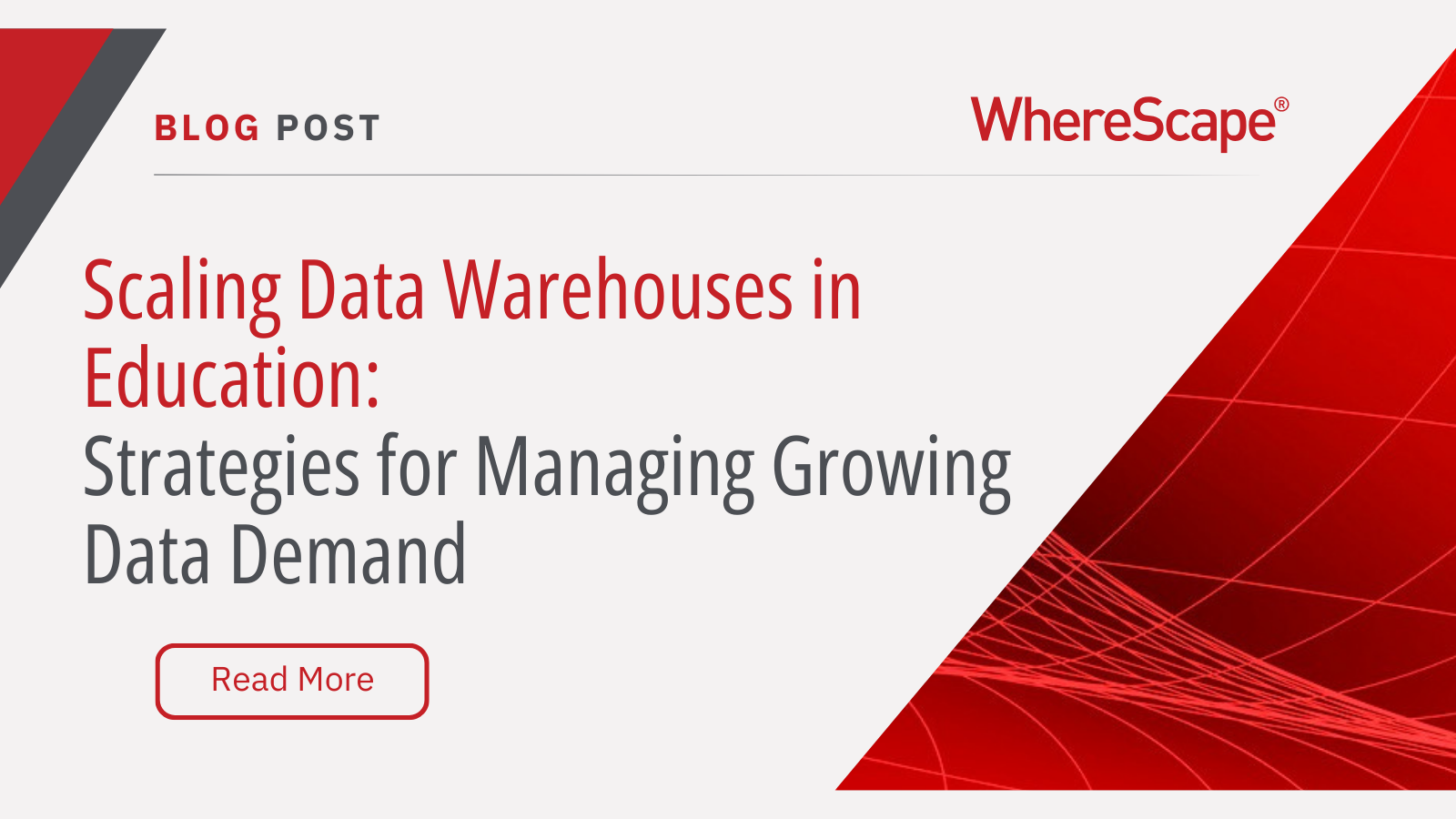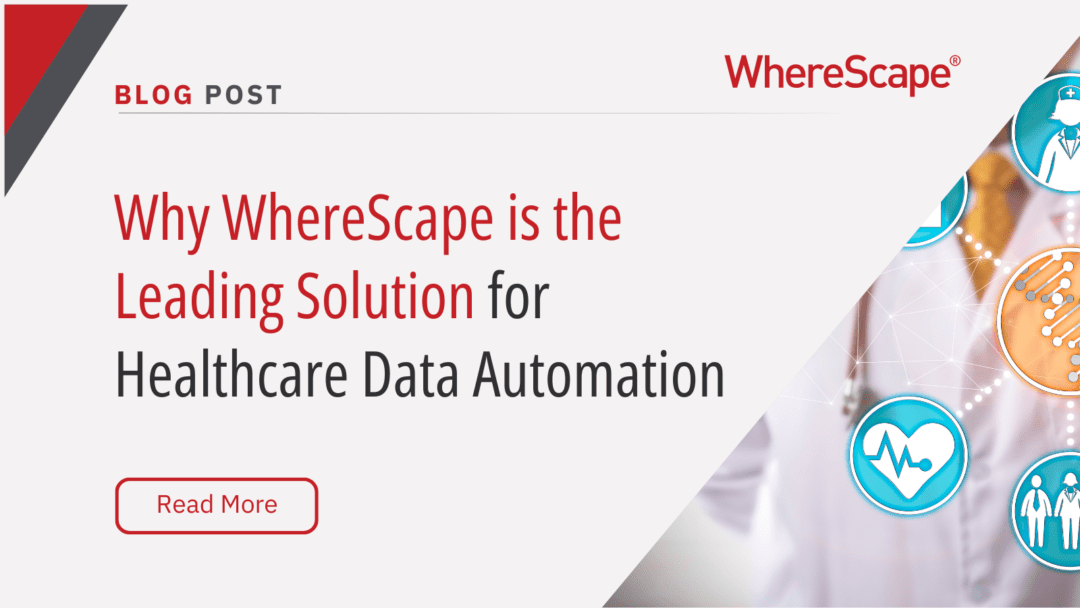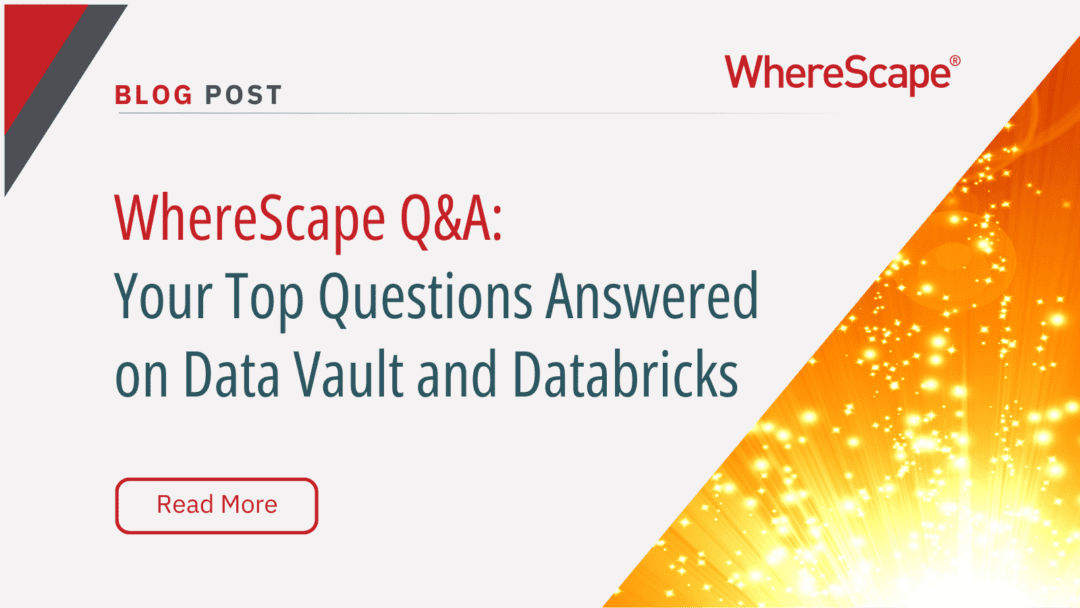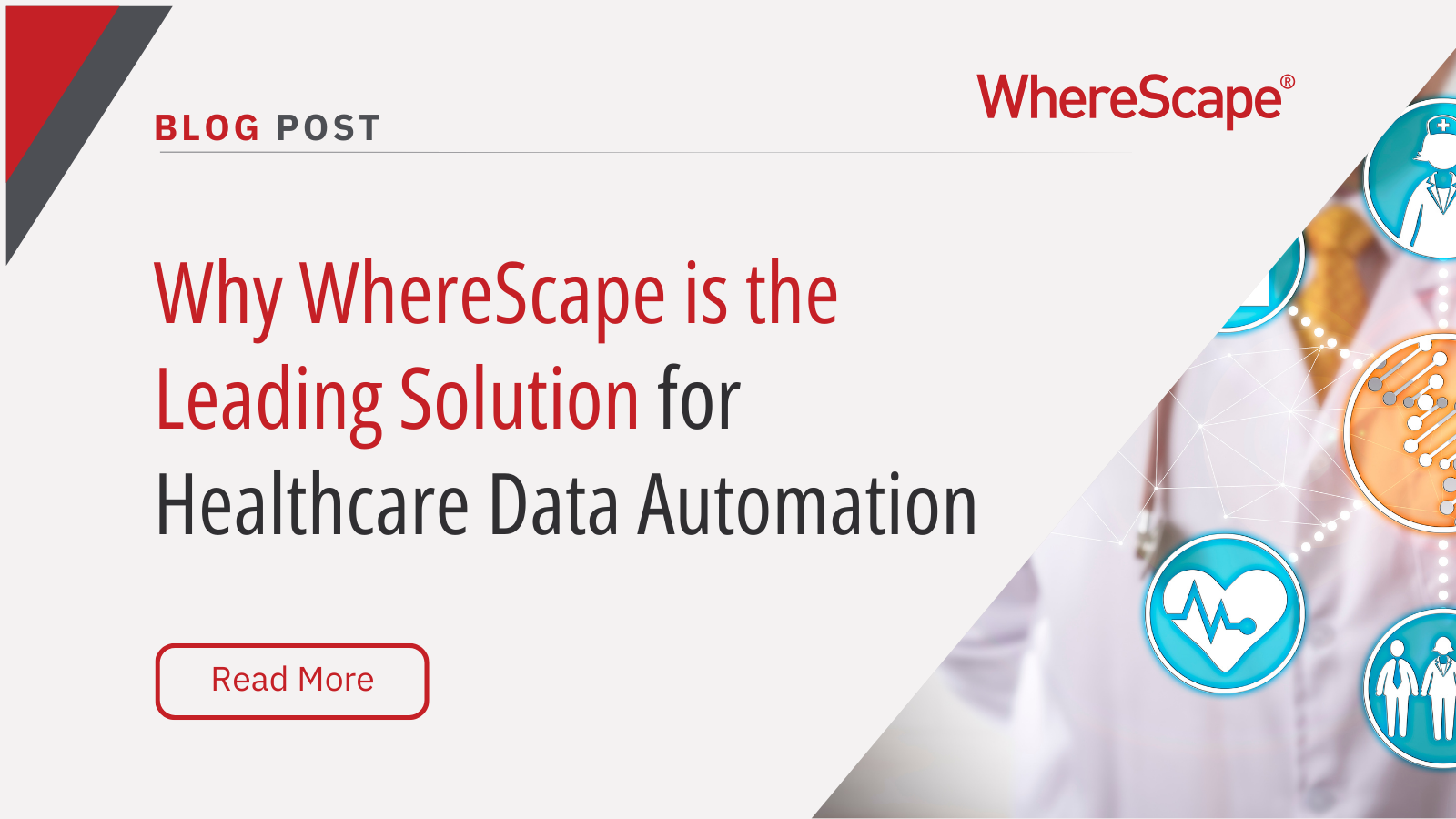Join us for a 60-minute live demo of...
Scaling Data Warehouses in Education: Strategies for Managing Growing Data Demand

Approximately 74% of educational leaders report that data-driven decision-making enhances institutional performance and helps achieve academic goals. [1]
Pinpointing effective data management strategies in education can make a profound impact on learning outcomes, student performance, and the success of learning institutions themselves. By scaling data systems in education, data teams can uncover new insights while keeping student data secure.
Traditional Data Warehousing Challenges in Education
The increasing volume and complexity of data require new and improved data management strategies in education. Traditional data management strategies in education struggle to keep up with the need for efficiency and actionable insights, instead falling into the trap of siloed information. That’s where data automation comes into play. Automation streamlines data management by integrating systems, reducing manual work, and providing real-time insights. This ensures more efficient processes, faster decision-making, and enhanced data security across educational institutions.
The Growing Demand for Robust Data Solutions
In order to overcome silos, inefficiencies, and lack of actionable insights in educational data management, many institutions turn to more robust data solutions. Advanced data management strategies in education allow teams to not only store data securely but also transform data into actionable insights that can guide strategic decisions for a brighter future. Scaling data systems in education allows institutions to see to the needs of their students while also complying with regulatory requirements and enhancing operational efficiency in the long term.
The Role of Data Warehouses in Educational Institutions
Data warehousing in education helps institutions adapt to new requirements and integrate diverse data sources for improved data usability. Educational data management requires centralized solutions for storing, managing, and analyzing data.
Centralizing Data for Better Decision-Making
Educational institutions can allocate resources more effectively by centralizing data. A centralized data warehouse breaks down silos to consolidate data into a single platform, bringing data sources from different departments and systems together to make it easier to analyze and interpret. Analysis from centralized data is more accurate and a centralized approach facilitates compliance with data governance standards. Centralized data warehousing in education enables data-driven decision-making to enhance student outcomes, streamline administrative processes, and optimize institutional resources.
Strategies for Scaling Data Warehouses Effectively
Educational institutions face growing data demands and challenges. In response, it’s critical that institutions adopt strategies for effectively scaling data systems in education.
Implementing Modular Architectures
Scalable data warehouses use a modular approach. Modular architecture allows for greater flexibility to scale over time. A modular architecture breaks down the data warehouse into smaller, more manageable components so that institutions can easily expand or modify specific areas of the data warehouse without unnecessary system disruptions. This way, teams can gradually implement new features and add new data without the risk of added downtime or system overload.
Leveraging Cloud-Based Solutions
Cloud solutions for universities offer an efficient and cost-effective path for scaling. Cloud-based data warehouses provide virtually unlimited processing power and storage. Institutions can use cloud solutions for universities to accommodate growing volumes of data without needing to invest upfront in hardware. Most cloud solutions for universities also come with built-in security features and compliance tools. WhereScape simplifies the transition from on-prem to the cloud, providing secure, scalable solutions tailored for universities.
Enhancing Data Quality and Accessibility
In addition to offering scalability, data warehousing in education also enhances the quality and accessibility of crucial data. Toward that end, educational data management practices should prioritize standardization and automation.
Standardizing Data for Consistency
Data management strategies in education must include systems for standardizing data formats. Implementing robust data governance practices to ensure a clean and consistent data warehouse leads to a more reliable and accessible source of information. In order for data from different sources to be integrated and analyzed, data teams must prioritize standardization.
By adopting standardized data formats and definitions, educational institutions can eliminate the discrepancies and inconsistencies that can arise when data is collected from multiple sources. This not only simplifies data integration but also improves the accuracy of reporting and analytics, making the data more useful.
Utilizing Automation for Data Integration
Academic data cycles lend themselves to an ever-changing collection of data, often from disparate sources and departments including finance, HR, professors, and student information. Using automation for data integration in higher education allows for greater efficiency and accuracy. Data automation software like WhereScape paves the way for a reduction in manual coding and a newly cohesive data repository, saving time and providing actionable insights.
Case Studies: Success Stories in Education
Data warehousing in education can yield exciting results with significant long-term impacts. The following case studies illustrate the possible improvements institutions can expect when implementing targeted data management strategies in education.
Bucknell University’s Cloud Migration

Bucknell University sought out top cloud solutions for universities with the aim of adopting an agile, scalable new system. With the automation capabilities of WhereScape RED, Bucknell University created a new data warehouse in the cloud in 50% less time. The team developed data models quickly, validating and delivering new subject areas in the data warehouse in a shorter period of time.
Cornell University’s Improved Data Infrastructure

Cornell University needed an open solution and a move away from stifling data platform dependency. They needed to be able to format data into dimensional models. WhereScape RED data warehouse automation provided faster time to production. WhereScape automated and standardized the data warehouse development, improved performance, and reduced costs.
Concluding thoughts: Building a Scalable Data Foundation
Educational institutions can use tools like WhereScape to quickly and accurately build a scalable data foundation. With these solutions at work, institutions can add data sources, standardize data inputs, and generate actionable insights from their data.
Discover More with WhereScape
Save time and improve accuracy as you build your new data warehouse. WhereScape makes top data management strategies in education more accessible and achievable through advanced tools and automation. Book your demo today!
[1] Center for Digital Education. (2022). Data-Driven Decision-Making in Education. Retrieved from Center for Digital Education.
Automating Data Vault in Databricks | WhereScape Recap
Automating Data Vault in Databricks can reduce time-to-value by up to 70%—and that’s why we hosted a recent WhereScape webinar to show exactly how. At WhereScape, modern data teams shouldn't have to choose between agility and governance. That's why we hosted a live...
WhereScape Recap: Highlights From Big Data & AI World London 2025
Big Data & AI World London 2025 brought together thousands of data and AI professionals at ExCeL London—and WhereScape was right in the middle of the action. With automation taking center stage across the industry, it was no surprise that our booth and sessions...
Why WhereScape is the Leading Solution for Healthcare Data Automation
Optimizing Healthcare Data Management with Automation Healthcare organizations manage vast amounts of medical data across EHR systems, billing platforms, clinical research, and operational analytics. However, healthcare data integration remains a challenge due to...
WhereScape Q&A: Your Top Questions Answered on Data Vault and Databricks
During our latest WhereScape webinar, attendees had fantastic questions about Data Vault 2.0, Databricks, and metadata automation. We’ve compiled the best questions and answers to help you understand how WhereScape streamlines data modeling, automation, and...
What is Data Fabric? A Smarter Way for Data Management
As of 2023, the global data fabric market was valued at $2.29 billion and is projected to grow to $12.91 billion by 2032, reflecting the critical role and rapid adoption of data fabric solutions in modern data management. The integration of data fabric solutions...
Want Better AI Data Management? Data Automation is the Answer
Understanding the AI Landscape Imagine losing 6% of your annual revenue—simply due to poor data quality. A recent survey found that underperforming AI models, built using low-quality or inaccurate data, cost companies an average of $406 million annually. Artificial...
RED 10: The ‘Git Friendly’ Revolution for CI/CD in Data Warehousing
For years, WhereScape RED has been the engine that powers rapidly built and high performance data warehouses. And while RED 10 has quietly empowered organizations since its launch in 2023, our latest 10.4 release is a game changer. We have dubbed this landmark update...
The Assembly Line for Your Data: How Automation Transforms Data Projects
Imagine an old-fashioned assembly line. Workers pass components down the line, each adding their own piece. It’s repetitive, prone to errors, and can grind to a halt if one person falls behind. Now, picture the modern version—robots assembling products with speed,...
The Role of Clean Data in AI Success: Avoiding “Garbage In, Garbage Out”
Co-authored by infoVia and WhereScape Artificial Intelligence (AI) is transforming industries across the globe, enabling organizations to uncover insights, automate processes, and make smarter decisions. However, one universal truth remains: the effectiveness of any...
What is a Cloud Data Warehouse?
As organizations increasingly turn to data-driven decision-making, the demand for cloud data warehouses continues to rise. The cloud data warehouse market is projected to grow significantly, reaching $10.42 billion by 2026 with a compound annual growth rate (CAGR) of...
Related Content

Automating Data Vault in Databricks | WhereScape Recap
Automating Data Vault in Databricks can reduce time-to-value by up to 70%—and that’s why we hosted a recent WhereScape webinar to show exactly how. At WhereScape, modern data teams shouldn't have to choose between agility and governance. That's why we hosted a live...

WhereScape Recap: Highlights From Big Data & AI World London 2025
Big Data & AI World London 2025 brought together thousands of data and AI professionals at ExCeL London—and WhereScape was right in the middle of the action. With automation taking center stage across the industry, it was no surprise that our booth and sessions...

Why WhereScape is the Leading Solution for Healthcare Data Automation
Optimizing Healthcare Data Management with Automation Healthcare organizations manage vast amounts of medical data across EHR systems, billing platforms, clinical research, and operational analytics. However, healthcare data integration remains a challenge due to...

WhereScape Q&A: Your Top Questions Answered on Data Vault and Databricks
During our latest WhereScape webinar, attendees had fantastic questions about Data Vault 2.0, Databricks, and metadata automation. We’ve compiled the best questions and answers to help you understand how WhereScape streamlines data modeling, automation, and...




